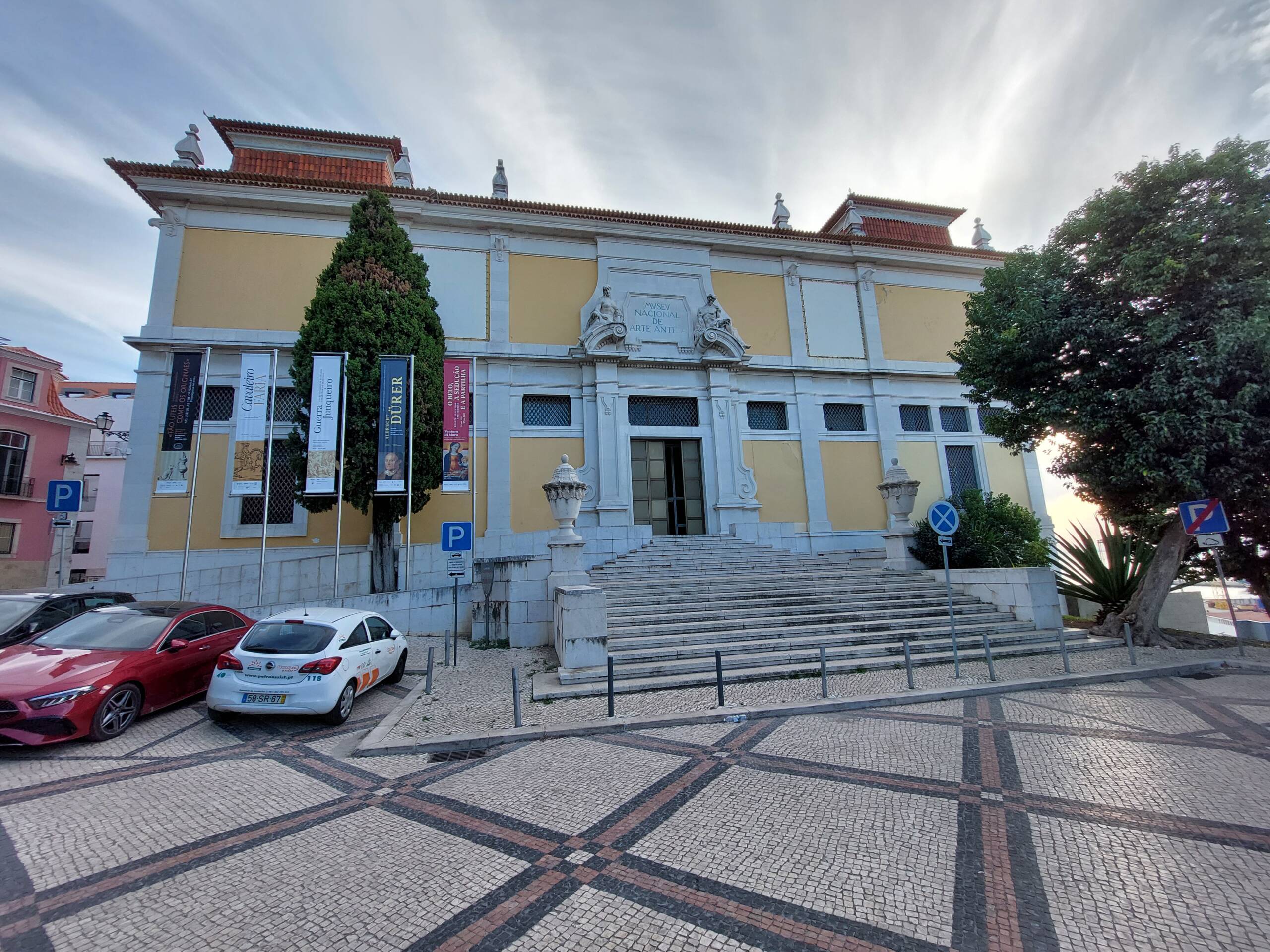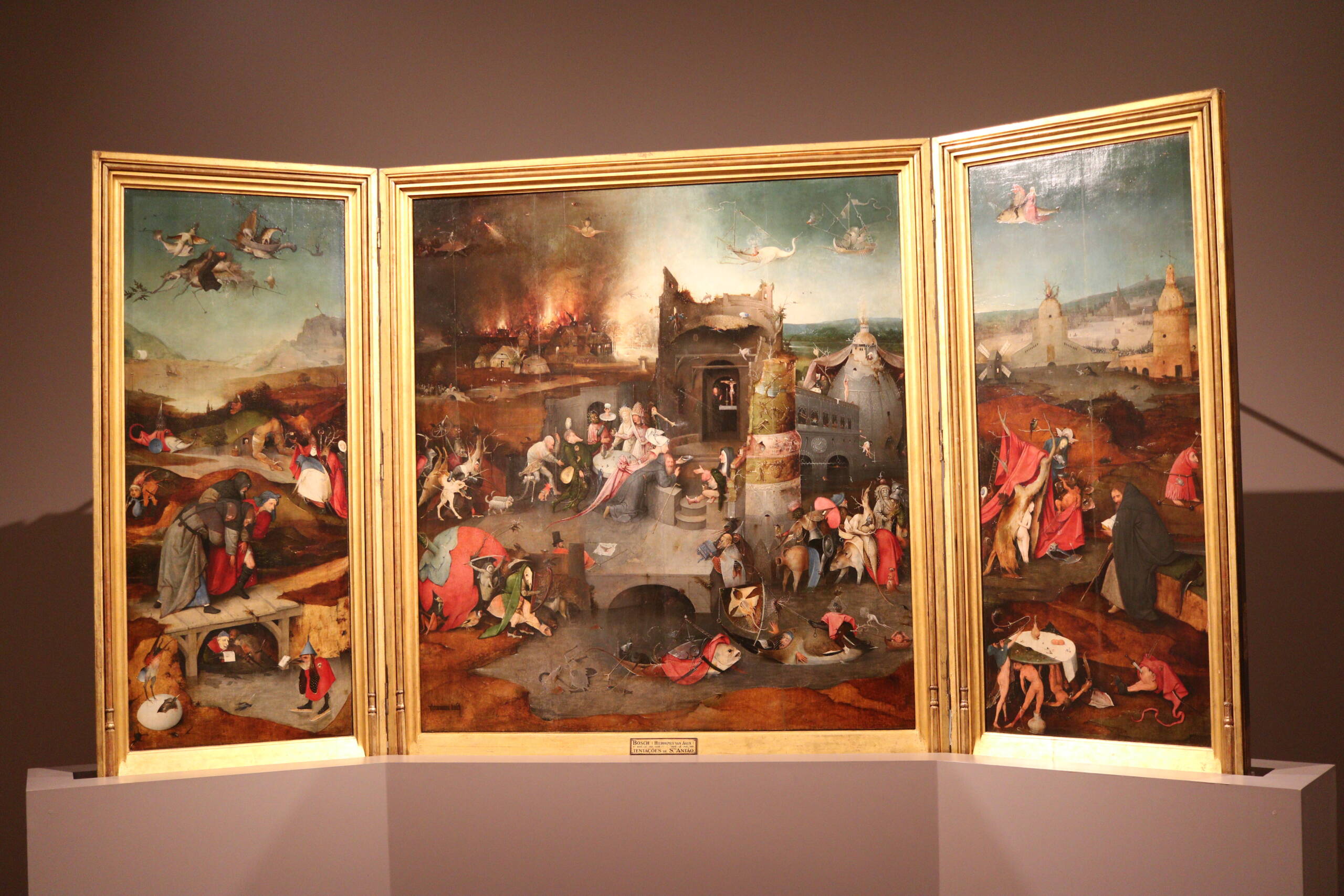Walking up the patterned calçada with its black-and-red mosaic geometry, you find yourself at the steps of one of Lisbon’s most important cultural landmarks—the Museu Nacional de Arte Antiga. The building itself is striking, with its warm yellow walls framed in white stonework, topped with terracotta-tiled pavilions and ornamented with sculpted details that hint at its 17th–18th century heritage. The grand staircase leading to the heavy doors feels ceremonial, almost like an invitation to step into a world of centuries-old treasures.

Outside, banners flutter in the breeze, each announcing a different exhibition: from Dürer’s precise engravings to icons of religious devotion and Renaissance portraits. The museum has always been a keeper of Europe’s artistic memory, but it is also deeply Portuguese, housing works like Nuno Gonçalves’ Panels of Saint Vincent, one of the nation’s most iconic paintings. What makes the place special is not just the art inside but the sense of continuity—you’re standing in front of a palace-turned-museum that connects Lisbon’s layered past with its cosmopolitan present.

The Temptation of St. Anthony, Museu Nacional de Arte Antiga, Lisbon
And there’s something quietly local about the scene too. A red Mercedes and a white city taxi squeeze into the small parking spaces at the side, the kind of detail that reminds you this isn’t some abstract monument but a living part of Lisbon. Just behind the museum, if you walk a bit further, you’ll catch views of the Tagus River. That’s the charm of Lisbon: art, history, and daily life all folded into the same frame.
Leave a Reply